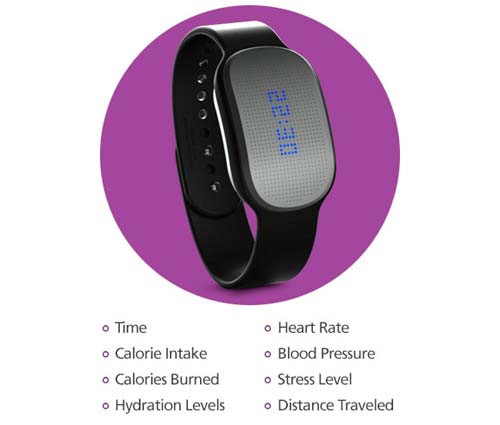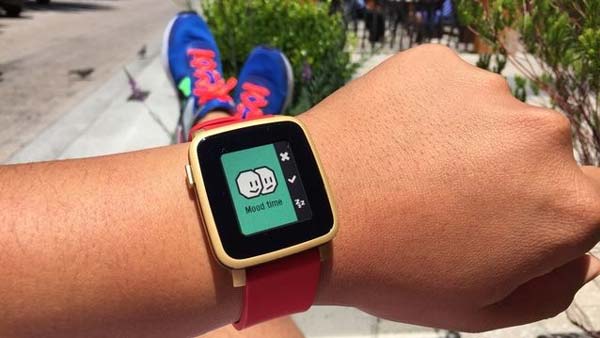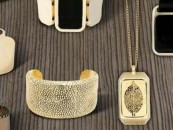The progress made by the wearables for far is mind-blowing. However, the accurate step counting and options on heart rate are not all that the wearables can do. More and more information can be obtained about our bodies and minds. Let’s therefore look at how the wearables are being used as of now and the possible next phase for these devices.
To do this, we will focus on which sensors will be a must have for future devices and the problems that the industry must address in order to move forward. The aim is to ensure that in future, we are able to eat food that is healthy, keep in shape and reduce stress levels.
1. Eating habits
Present
The best tracking device for this area is MyFitnessPal. The device has well above 85 million users across the globe and a thorough if not exhaustive database. It also comes with the ability to save foods that are regularly eaten, recipe and meals, scanning of barcodes and allows the user to set specific goals with regards to his/her nutrition.
Even though the device is able to linkup with third party apps through Apple Health and Google Fit, it still requires the user to search for foods, guess amounts and manually input ingredients with their quantities. And even though there is Im2Calories which estimates the calories in the food you have snapped, no one wants to keep taking pictures of the food they are about to eat. In addition, it constantly misidentifies food.
Future
There are wearables that are still in the works which aim at giving the user more information about what they are consuming in real time. Devices such as HealBe GoBe claim to be able to count calories automatically by measuring the blood glucose levels. Some people have questioned the science behind it but reviews taken show that it can still be useful as the results are not so far off.

Google is coming up with a smart contact lens that can track blood glucose levels. It is primarily aimed at people suffering from diabetes but can also be a helpful companion to conscious eaters.
Another development is the AutoDietary smart necklace which is being developed by Northeastern University researchers in China. They claim the device can count the calories in food by matching the audio of your eating to a database of food sounds. It is somehow ridiculous though you can never tell.
Samsung C-Lab is one device dedicated at measuring our long-term weight trends. The device is a spinoff from welt. Its key goal is to address the crises of obesity. Using the tech installed in the buckle, welt makes an exact measurement of the waist and uses its algorithms to know whether you have overeaten, bloated or are gaining weight.
The baseline is that the future devices must figure out a way to help the users to eat healthy, build good habits and lose weight.
2. Fitness and Physical Health
Present
The leaders in this area are Fitbit and Apple watch. In recent times though, the trend has been towards heartrate monitors. Most of the devices in the moment are focused towards steps metrics, active time, calories burned and distance. Such devices include Misfits, Jawbones and smart jewelry. Most of the functions by these devices however, can be performed by a gyroscope, accelerometer and a GPS. The good thing is that the prices of these devices are falling especially those that do not have heart rate monitoring.
Future
Most experts in this area are calling for more focus on HRV (Heart Rate Variability) in fitness trackers. HRV is the measurement of the time interval that is between heartbeats i.e. the small heart fluctuations and necessarily not the headline of the beats per minute. The essence is that one can figure out whether the strain on the body and also decide whether one is ready to start working out again.
In regards to Fitbit, some experts project that the users will be able to monitor blood pressure and produce more statistics on an athlete’s performance.
In other developments, Jawbone acquired a medtech company by the name of Spectros in 2015. The company has a specialty in measuring pulse oximetry among other things. This is the level of oxygen in the blood. The company has promised that in the coming future, it will delve into more accurate calorific burn and also the amount of REM and deep sleep one gets.
The fairly new trends in this area will come from implantable i.e. Body Cap’s e-Celsius performance electronic pill. This device tracks the core body temperature from the inside of the body, specifically in the gastrointestinal tract. It is aimed at training of elite athletes.
You May Also Read: Xiaomi is Set to Release the Mi Band 2 Fitness Tracker
3. Emotions and stress
Present
This is still untapped. Some of the devices here include Spire which is clipped on your belt to track your breathing as you inhale and exhale. The downside is that this device can be easily forgotten and the information that is presented in the app is also tricky to understand.
Pebble is also getting in this area with its Happiness app which requires you to manually input your moods and energy levels but still in the right direction.

Future
Entry of Apple in this area means that things will start to happen. This is became evident during the WWDC keynote where the company shared details on a new app called Breathe which will be released during the fall or autumn. It provides meditation exercises.
Another device in the works is Zenta. This device measures how relaxed, stressed, happy or angry we are alongside HRV. It is a real step into a future of efficient and functional trackers.





No Comments so far
Jump into a conversationNo Comments Yet!
You can be the one to start a conversation.